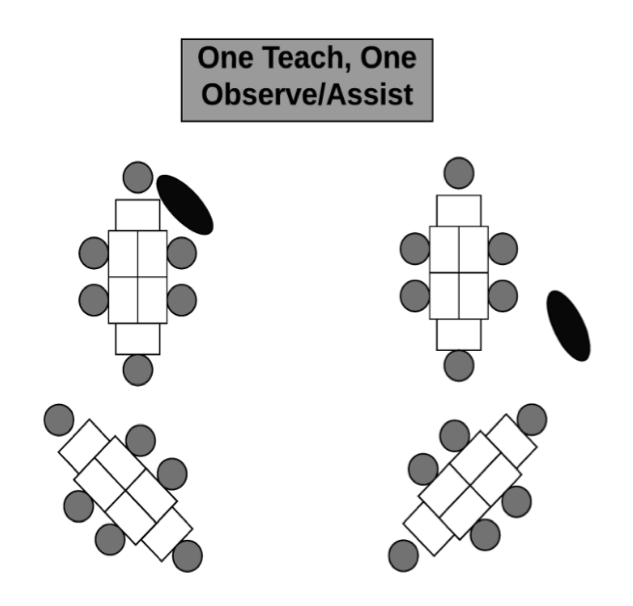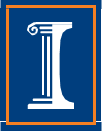Project TACTIC: Teaching All Computational Thinking through Inclusion and Collaboration
TACTICal Teaching Brief
Introduction
CS education often involves the classroom teacher working with one or more specialist in planning, teaching and assessing of student learning. One example of this type of collaboration is co-teaching, wherein two or more teachers work together to plan and/or deliver instruction (Murkawski&Dieker, 2008). Co-teaching can occur between a CS teacher, special education teacher, instructional coach, specialists such as a speech/language pathologist, and other adults in the classroom. Coteaching can provide a flexible and deliberate approach in meeting the needs of all learners (Friend, Cool, Hurley-Chamberlain&Shamberger, 2010).
Scenario
Mr. Gibson is a 3rd grade teacher who has enjoyed bringing CS instruction into his classroom. In thinking about how to integrate CS into the core subjects, Mr. Gibson often considers to how to include all his students including three students with disabilities.
Rachel has a learning disability related to math; She is most successful when provided with a combination of explicit instruction with scaffolded opportunities to demonstrate her learning.
Roberto has a social communication disorder that kept him from verbally expressing his needs. He is enthusiastic about his project work but gets bogged down periodically and has trouble productively expressing his challenges as to how he should proceed.
Connie has an emotional behavior disorder as well as a speech/language impairment and often does not interact with her peers. She has strong CS skills due to a personal interest in computing and video games.
Mr. Gibson met with Ms. Gomez, the special education teacher, to help address the challenges that Rachel, Roberto, and Connie exhibit during CS activities. He also decided to reach out to one of his school district’s technology coaches, Ms. Ross because of her familiarity with the CS activities. Mr. Gibson hopes that Ms. Gomez or Ms. Ross will have some ideas about how to better include these three learners in the CS activities. With the support of this team of professionals, Mr. Gibson seeks to capitalize on the strengths of these students to help them find increased success during CS education activities.
Common Challenges
- Meeting the needs of a diverse set of learners can be difficult, especially if one does not have a background in CS or familiarity with special education strategies and practices.
- Finding time to plan for the diverse needs of a large group takes considerable time and is especially difficult with a new subject such as CS.
- While CS specialists know their content areas, they may struggle with making CS educational opportunities accessible to all students.
- Some students seem to thrive with more structured approaches to learning CS content, while others enjoy a more open-ended approach. Trying to provide an individualized approach that meets the needs of each learner can be challenging for one teacher.
Strategies for Co-teaching
- Discuss strengths and areas of growth of each team member. General education teachers will know their content. Special educators may not initially be content experts (prior to the co-teaching experience), but they have expertise in individualizing, adapting and differentiating instruction. CS instructional coaches may have multiple strategies for teaching CS, but may not have deep knowledge of the students in the classroom.
- Clearly define instructional roles ahead of time for each team member in co-teaching situations. Team members should discuss responsibilities in the planning, instruction and assessment of learning CS, while acknowledging that these roles are flexible and may change over time.
- For example, at the beginning of a co-teaching relationship, the CS teacher may take a primary role in providing core instruction while the special education teacher may provide individualization support (e.g., One teach/one assist). Over time, as each teacher learns about each other’s strengths and areas of expertise, these roles may shift to both teachers being responsible for core instruction, but from different perspectives (e.g., team teaching).
- Establish an environment where both teachers know all the students and are equally responsible for the culture of learning in the CS classroom. Some research has shown that when a special education teacher is present in the classroom, the general education professional often spends less time interacting with students with disabilities (e.g., Magiera, Smith, Zigmond,&Gabener, 2005).
- For example, co-teachers should discuss how each team member approaches classroom management before engaging in co-teaching and settle on a unified approach and rules so that the students regard both teachers as authority figures.
- Communicate any pet peeves, preferences or personal goals in advance and decide on how each member will communicate if they are feeling under or over utilized.
- Examples of common areas of differences in preferences: (a) timing for grading assignments, (b) noise level in the classroom, (c) approaches to student collaboration. If these areas are not discussed openly, they can lead to miscommunication and hurt feelings.
- Commit to regularly co-plan with your co-teacher. If you don’t have regularly scheduled co-planning sessions, consider (a) speaking with your administrator to help brainstorm ideas, and (b) find ways to use technology to help with co-planning such as using shared electronic documents such as Google Docs to share lesson plans. The longer co-teachers work together, the less time it takes them to plan.
- Recognize the the importance of shared risk-taking and resilience. One of the strengths of co-teaching is that it allows team members to learn from and with each other.
- For example, if the science teacher was interested in working with the CS teacher to develop computational models in Scratch, one risk could be longer than anticipated time to cover the content. However, even if this challenge emerged, it could be instructive for both teachers in planning future collaborative lessons.
- Familiarize yourself with standard co-teaching models and practices and consider ways of using different models based on the CS instructional goals, anticipated learner needs, and comfort with the content areas.
Co-teaching Models and Practices
(co-teaching models adapted from Friend et al. 2010)




Summary
After school the following week, Mr. Gibson meets with this team. It quickly becomes clear that the collective expertise of the team will result in several improvements to his CS instruction! Ms. Ross suggests several ideas for bringing in additional unplugged activities and some tiered activities to build on and extend students' understanding. Ms. Gomez provides further recommendations to modify these activities that directly meet the individual needs of Mr. Gibson's students. For example, they agree to use an alternative teaching approach, so that one adult pre-loads or reinforces information for a group of students, while the other instructor provides general instruction to the remainder of the class.
Over time, between co-planning and co-teaching, Mr. Gibson begins to see that all his students are becoming more engaged in the CS activities. For example, after implementing an alternative teaching approach, Mr. Gibson sees that Rachel is showing significant growth. Co-teaching allows her to receive reinforcement of difficult concepts in the classroom. An added advantage for Mr. Gibson is that he has developed the foundations for better communication and collaboration with both the special education team and the CS instructional coach!
References
Friend, M., & Bursuck, W. D. (2002). Including students with special needs: A practical guide for classroom teachers. Allyn & Bacon, A Pearson Education Company, 75 Arlington Street, Boston, MA 02116.
Friend, M., Cook, L., Hurley-Chamberlain, D., & Shamberger, C. (2010). Co-teaching: An illustration of the complexity of collaboration in special education. Journal of Educational and Psychological Consultation, 20(1), 9-27.
Magiera, K., Smith, C., Zigmond, N., & Gebauer, K. (2005). Benefits of co-teaching in secondary mathematics classes. Teaching exceptional children, 37(3), 20-24.
Murawski, W. W., & Dieker, L. (2008). 50 Ways to Keep Your Co-Teacher: Strategies for Before, During, and After Co-Teaching. Teaching Exceptional Children, 40(4), 40-48.
Funding for this research was provided by the National Science Foundation (award #1639837). Any opinions, findings, conclusions, or recommendations expressed in this material are those of the authors and do not necessarily reflect those of the NSF.
Recommended Citation:
Lash, T., Israel, M., Jeong, G., & Reese, G. (2018). Meeting the needs of all learners in K-12 computer science through co-planning and co-teaching. Project TACTIC: Teaching All Computational Thinking through Inclusion and Collaboration. Retrived from University of Illinois, Creative Technology Research Lab website: http://CTRL.education.Illinois.edu/TACTICal

 Funding for this research was provided by the National Science Foundation (award #1639837). Any opinions, findings, conclusions, or recommendations expressed in this material are those of the authors and do not necessarily reflect those of the NSF.
Funding for this research was provided by the National Science Foundation (award #1639837). Any opinions, findings, conclusions, or recommendations expressed in this material are those of the authors and do not necessarily reflect those of the NSF.
